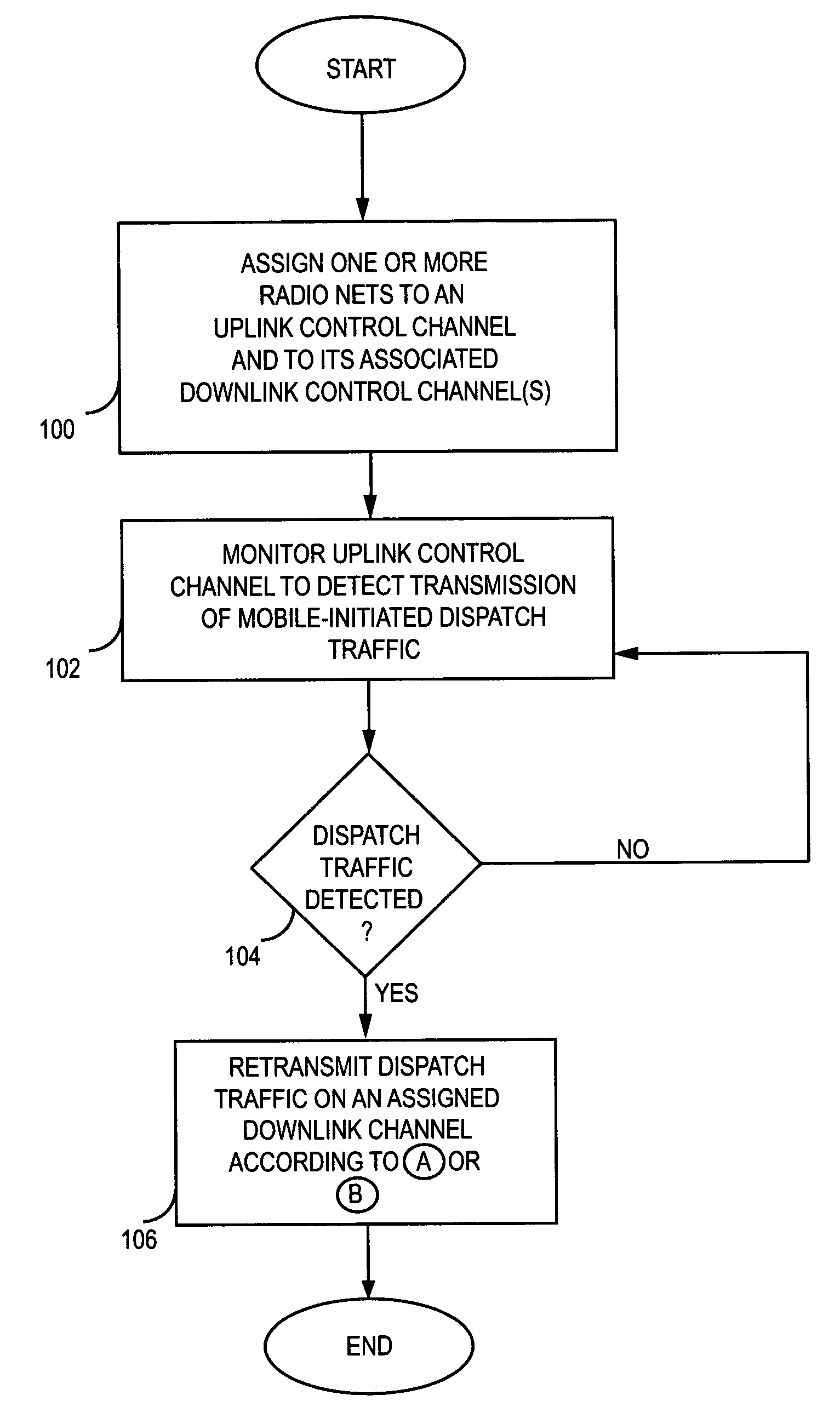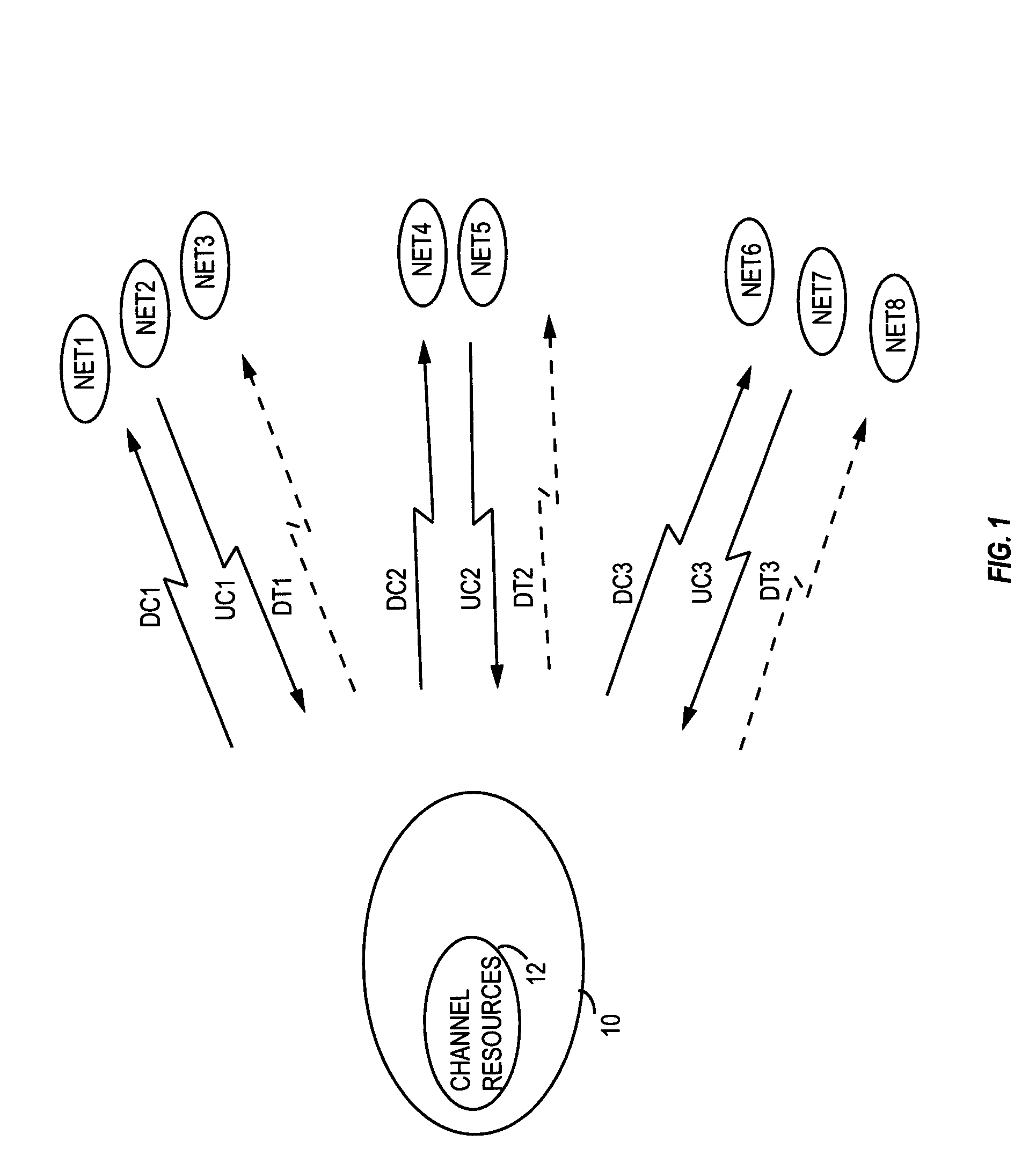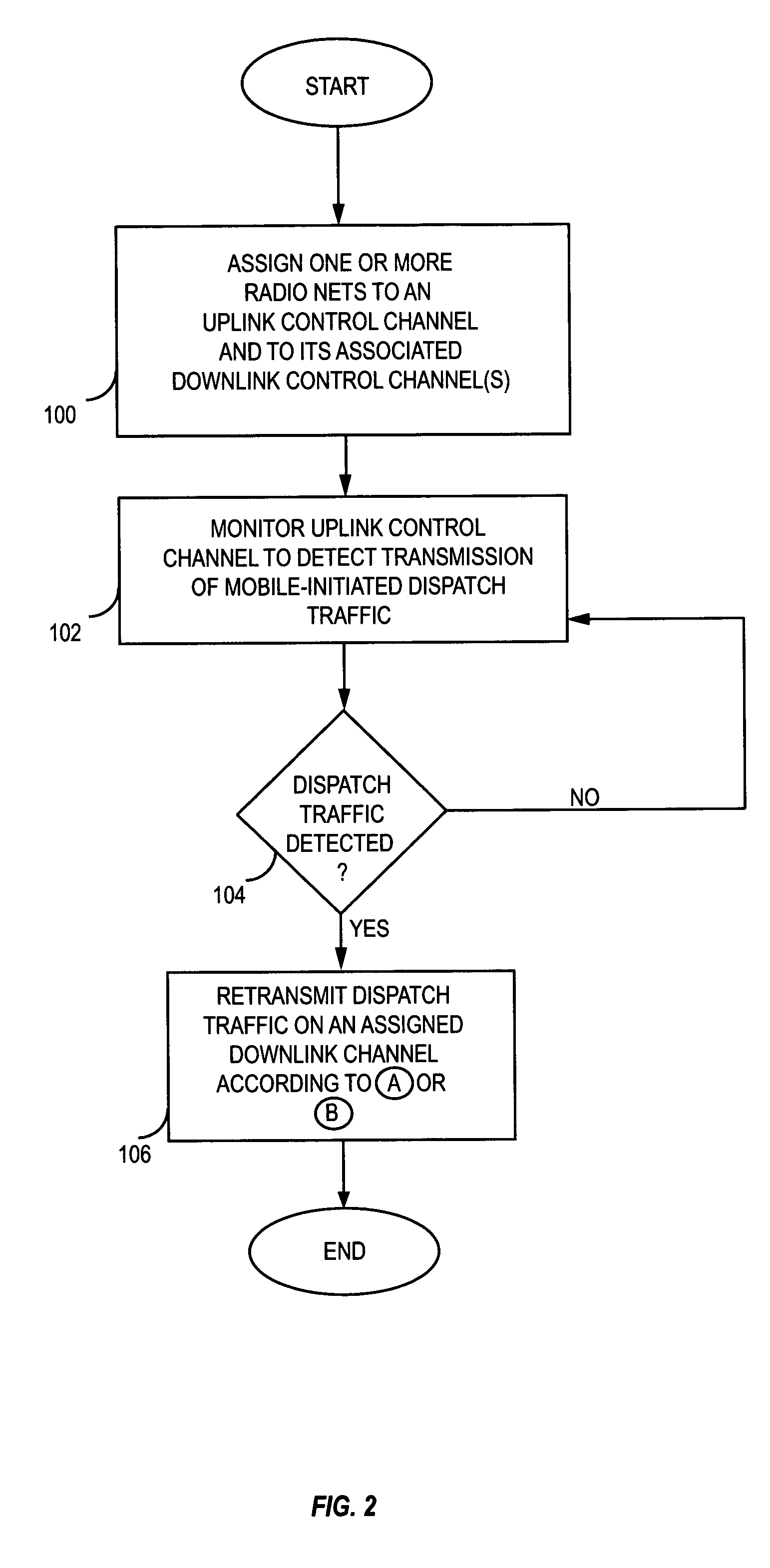Method and apparatus to reduce dispatch delays in dispatch communication networks
a dispatch communication network and dispatch delay technology, applied in the field of push-to-talk communication, can solve problems such as inacceptable push-to-talk dispatch delay, and achieve the effect of reducing dispatch delay
- Summary
- Abstract
- Description
- Claims
- Application Information
AI Technical Summary
Benefits of technology
Problems solved by technology
Method used
Image
Examples
Embodiment Construction
[0021] Certain broad ideas must be introduced before moving into detailed exemplary descriptions because the present invention may be implemented in a variety of radio networks according to a variety of communication types, e.g., CDMA, TDMA, etc. First, as used herein, the term “channel” describes a communication signal at any selected frequency, time, code, or any combination thereof. Examples of channels include, but are not limited to, an assigned CDMA spreading code on a selected carrier frequency, one or more assigned timeslots within repeating TDMA frames at one or more selected frequencies, a defined sequence of frequency hops, code hops, or a combination of frequency and code hops.
[0022] Further, in broad terms, an exemplary communication system according to the present invention comprises a network of radio base or relay stations in communication with a plurality of subscriber terminals (e.g., mobile terminals) and, optionally, in communication with other subscribers linke...
PUM
 Login to View More
Login to View More Abstract
Description
Claims
Application Information
 Login to View More
Login to View More - R&D
- Intellectual Property
- Life Sciences
- Materials
- Tech Scout
- Unparalleled Data Quality
- Higher Quality Content
- 60% Fewer Hallucinations
Browse by: Latest US Patents, China's latest patents, Technical Efficacy Thesaurus, Application Domain, Technology Topic, Popular Technical Reports.
© 2025 PatSnap. All rights reserved.Legal|Privacy policy|Modern Slavery Act Transparency Statement|Sitemap|About US| Contact US: help@patsnap.com



